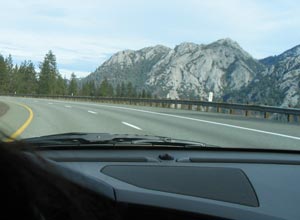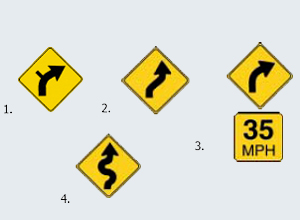Curves
Welcome to Our Quick & Easy Driving Information Guide
Because of centrifugal force, there is a strong outward pull on your vehicle. So be careful and watch out for it, especially when the road may be slippery in case of rain, mud, or snow. Sometimes a speed limit sign is not posted on a curved road. Judge how sharp the curve is. Slow down before you enter the curve. Braking on a curve may cause you to skid.
Reduce speed before entering the curve, and slowly lighten the pressure on the brake until reaching the apex point (where the car is closest to the inside of the curve line). At the apex or exit point, apply light acceleration to pull the car out of the curve.

Searching as far ahead as possible and identifying the existence of a curve will provide you with more time to evaluate and control the level of risk.
- Does the roadway curve to the left or right?
- Can the exit of the curve be seen ahead?
- What is the sharpness of the curve?
- What is the lane width?
- What are the shoulder conditions?
- What is the posted speed or traffic volume?
- Is the curve on a grade, up or down hill?
- Is the field of view restricted?
- Can an apex point for exiting the curve be determined?
Answering these questions and checking traffic to the rear better enables a driver to determine the best speed and lane position for negotiating a curve.

Look for signs indicating curves. For example:
Sign 1 means that the road ahead curves right and a side road joins from the left within the curve. Be alert for vehicles entering the roadway you are traveling.
Sign 2 means that the road ahead curves right, then left.
Sign 3 means a right curve with safe speed indicator.
Sign 4 means that the road ahead winds with a series of turns or curves.
© 1997-2025 DriversEd.com. All rights reserved. Please see our privacy policy for more details.






